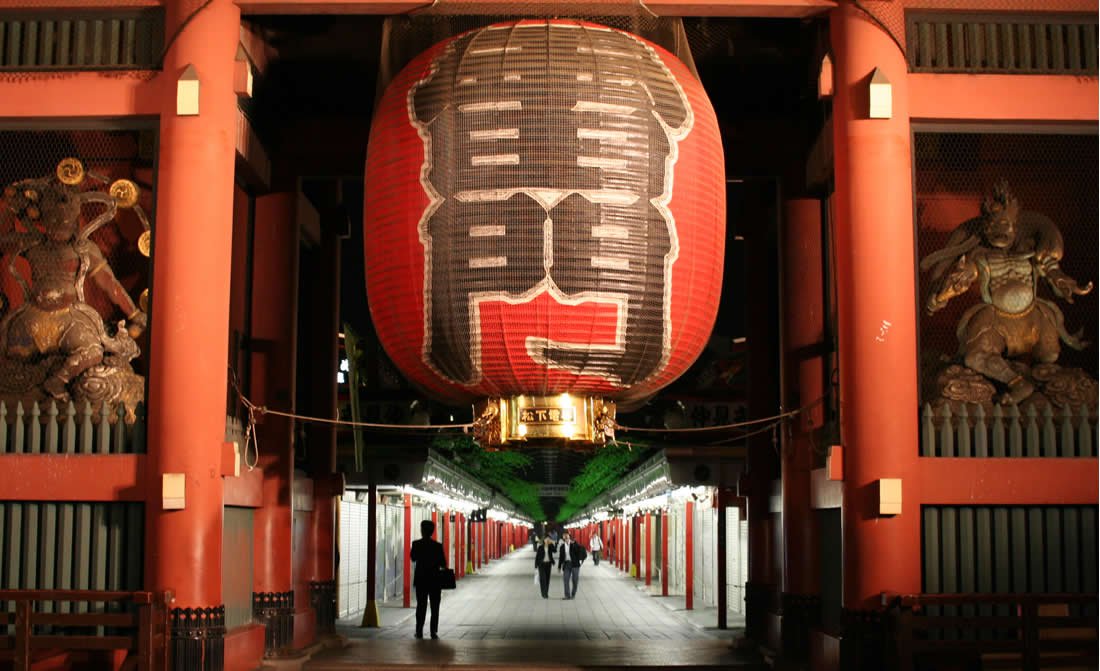Day 11
Excursion starts:
This morning at 9:00am, meet your private guide, and leave by chartered vehicle for your first day of Kyoto excursion. Start your visit at Sanjusangendo founded in 1164 and famous for its 1001 statues of Kannon, the Goddess mercy. Entering the main hall, guests can notice a centrally located large Kannon, flanked on each side by 500 smaller statues, standing in neat rows side by side, each as tall as a human being.
Transfer to Kodaiji Temple, which is a temple of the Rinzai (Pure Land) school of Zen Buddhism and was founded during the Momoyama-period, by the wife of Toyotomi Hideyoshi, the powerful general who unified Japan at the end of the 16th century. Kodaiji is interesting, not only for its formal gardens, including “artificial mountains’ garden and dry rock garden, but also a bamboo grove leading to two famous teahouses and the splendid Maki-e, which give this temple its nickname as “Maki-e Temple.
Reach Yasakajinja Shrine which is one of Kyoto’s most famous shrine, particularly for travellers and funds the annual Gion Matsuri Festival. Enter the peaceful grounds and witness the multiple offerings made by local people & businesses. You may also witness or even experience a ceremony performed by the Shrine’s maidens (advance notice is required). The Shrine is also very pretty at night, when its numerous lanterns are lit.
After lunch, visit the National Museum of Modern Art, a wonderful place to spend an afternoon. The permanent collection has several galleries, displaying selected works of nihonga (Japanese style painting), yōga (Western-style painting), prints, sculpture, crafts (ceramics, textiles, metalworks, wood and bamboo works, lacquers and jewelry) and photography from the museum collection. Also shown are outstanding and monumental works of modern art in Japan, as well as modern and contemporary European and American art.
Then take a stroll in Teramachi, a quiet and relaxing district, offering great shopping opportunities. Seikado (traditional Japanese metal craft) and Ippodo (exclusive Japanese tea) and other time-honored shops have long made Teramachi Street a popular yet distinctive area.
Alternatively, you can enjoy exclusive visits to Art Galleries, including a meeting with the owner of the gallery or the artist.
Finally, if time allows, terminate with a visit to Nishiki Market, a narrow shopping arcade only 400 meters in length with over 100 vendors. Here, guests can discover Kyoto’s distinctive culinary delicacies and be surprised by the sights, the sound and the smells. “Aritsugu” which features a variety of excellent kitchen tools, is a recommended shop to visit.
Return to your hotel by 17:00 PM and enjoy time at leisure.
Optional unique encounter: tonight, you may experience a unique encounter in one of Kyoto’s most exclusive Japanese restaurant, in the company of two personal “maiko & Geisha” who are finely schooled in the arts of songs, dance and games, accompanied by a musician. Your guide will be here to act as an interpreter, while you chat with the Geisha before they perform games and dances. This is a once in a lifetime experience, reserved to the elite, even for Japanese. Return to your hotel around 21.00 pm.
Accommodation: The Ritz-Carlton Kyoto

